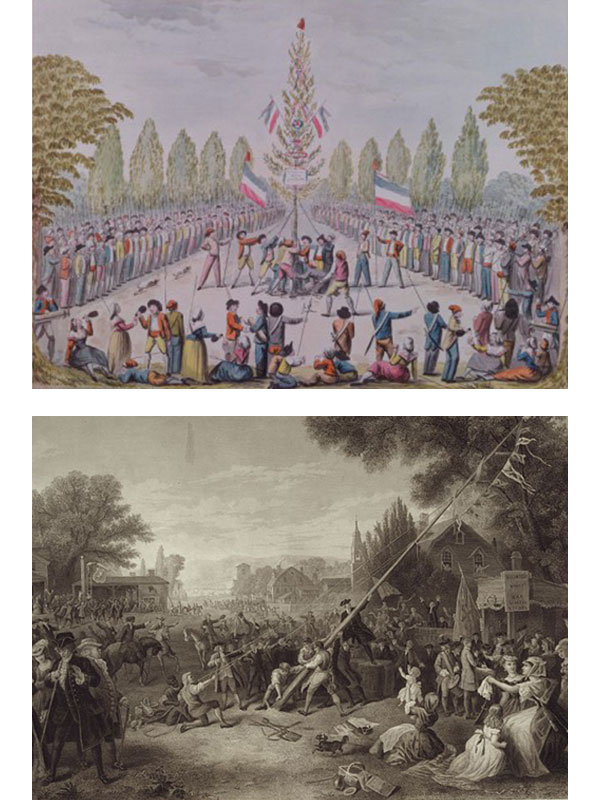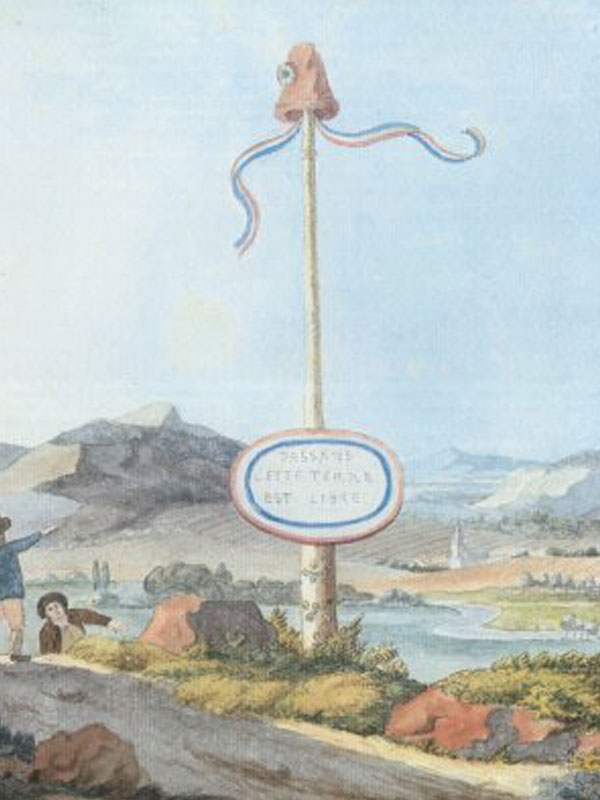The Liberty Pole
The American Flag Pole Has a Meaning Too.
We know the patriots met under large liberty trees to protest the injustices of the Stamp Act. And whenever there was to be a meeting, they would fly a red flag above the tree on a pole as a call for people to attend. A liberty cap was always red. So it also made sense to have a red flag. Thus the first American flag flown by the Sons of Liberty was on a flagpole on top of the Liberty Tree. In the revolutionary era, where large trees were not conveniently available in public places, our founding patriots would often raise a liberty pole as a sign of their commitment to the American cause of freedom. This pole was understood to be a Liberty Pole. But the Sons of Liberty did not create the Liberty Pole. It had had a history that was already centuries old, going back to the classical era!
The History of the Liberty Pole
The idea for a Liberty Pole goes back to pre-Roman history. When a slave was freed, he was given a cap to show his new status. This was called a liberty cap. Later, in a Roman army battle, a conquering general raised up a liberty cap on a pole and called on the slaves to stand with him. If they did, they would receive freedom. This became known as a liberty pole. In symbolism, the liberty pole is usually shown with a liberty cap on it. This symbol was used frequently in the Founding era. Paul Revere used it in some of his sketches. It was used on some of the regimental flags. It found its way on some of the colonies’ new currency, as they became states of the United States. It finally became part of the seal for the U.S. Military’s Department of War.
Stories of the Liberty Pole in America
Several stories about the significance of Liberty Poles have been preserved. The first skirmish of the American revolution actually occurred in New York City at a place called Golden Hill, not far from modern day Wall Street. The Liberty Pole had been erected to celebrate the end of the hated stamp act. Annual celebrations were kept at that site. This eventually created conflict with the British troops stationed there, who finally cut down the pole in an act of contempt. Further raising and cutting down of poles ensued until eventually a conflict resulted. Fortunately, no one was killed, but people were injured.


A story is also told of teenage girls blowing up a flagpole in a seaport town, lest it be used as a mast for a British war ship that had landed to repair its broken mast. Sometimes liberty poles were called “masts” because they resembled the tall wooden masts of ships. Remember, that flags also flew on top of those tall masts!
One town in Maine has preserved a Liberty Pole tradition. There the liberty pole the townsmen had raised had been observed by the English sailors who had come ashore. The people were required to take it down. but refused, and in the process, the militia was called forth to fight the British, and eventually captured the British ship.
Thus our first flag pole is really a Liberty Pole on which the ensign of American liberty flies. When the young American army first faced the British regulars at Concord, we read in the records of the British, that they destroyed a liberty Pole in the aftermath of the battle of Concord. That Liberty Pole had an American Flag flying on it. We can understand, then, Jefferson’s 1787 remark that “the tree of liberty must be refreshed from time to time with the blood of patriots and tyrants.”
Providence Forum has dedicated a new flag pole/liberty pole. This was done in Bryn Mawr, Pennsylvania, not far from Philadelphia where our nation’s first flag was made, and even closer to a nearby town named Narberth, that was originally named Liberty Pole, PA. This new Liberty Pole/Flag Pole has special significance. It is made from the wood of the last standing Liberty Tree, that came down as a result of Hurricane Floyd in Annapolis MD.
